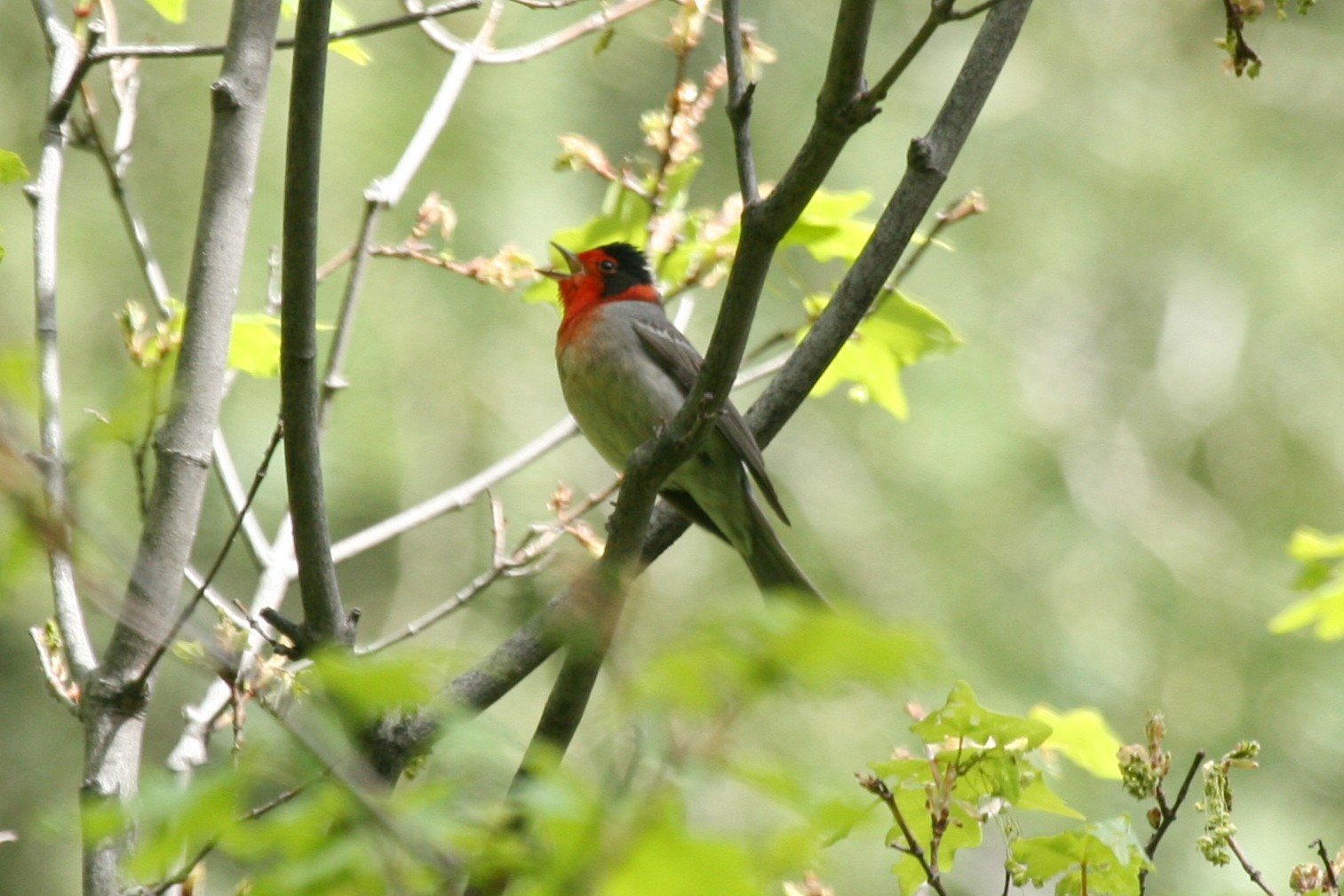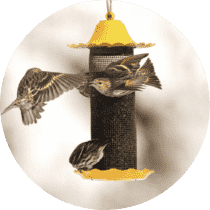Red-faced Warbler
A species of Red-faced Warblers Scientific name : Cardellina rubrifrons Genus : Red-faced Warblers
Red-faced Warbler, A species of Red-faced Warblers
Botanical name: Cardellina rubrifrons
Genus: Red-faced Warblers
Content
Description General Info
 Photo By Dominic Sherony , used under CC-BY-SA-2.0 /Cropped and compressed from original
Photo By Dominic Sherony , used under CC-BY-SA-2.0 /Cropped and compressed from original Description
The red-faced warbler (Cardellina rubrifrons) is a species of New World warbler. Mature red-faced warblers are small birds, 14 cm (5 ⁄2 in) long. They are light gray on top with a white rump and a white underside. The face, neck, and upper breast are all bright red, while the crown and sides of the head are black. The spot on the back of the head where the black crown and gray back meet is sometimes speckled gray, or sometimes plain white. They have a quirky habit of flicking their tail sideways while feeding. Red-faced warblers are locally common in mountain forests of conifers and oak at 2,000 to 3,000 m (6,600 to 9,800 ft) above sea level. In summer they frequent northern Mexico and range up into the states of Arizona and New Mexico – the Madrean sky islands. In winter they migrate south into southern Mexico and the Central American nations of El Salvador, Guatemala, and Honduras. They are permanent residents of the central and southern mountains of western Mexico, the range called Sierra Madre Occidental. The nest is a small cup constructed from leaves, grass, and pine needles. It is hidden amongst the debris on the forest floor, buried in the ground, sheltered under a shrub, log, or rock. The female lays 3 to 5 eggs, which are white spotted with brown. Incubation and nestling periods average 12 days each. 
Size
13 cm (5 in)
Life Expectancy
3 years
Nest Placement
Ground
Clutch Size
3 - 6 eggs
Feeding Habits
Red-faced Warbler primarily consume insects, including caterpillars, flies, aphids, scale insects, leafhoppers, treehoppers, planthoppers, and spittlebugs. They forage in coniferous and occasionally deciduous trees, gleaning or hover-gleaning along branches. Their tail-flicking behavior might startle prey into motion. Red-faced Warbler sometimes eats beetles and larvae.
Habitat
Red-faced Warbler primarily reside in montane coniferous forests, thriving in environments typically above 4,000 feet elevation. Their preferred habitats are open pine-oak woodlands found in steep, high-altitude canyons and areas abundant with streams. Common vegetation includes pine, oak, fir, and in the loftier ranges, Douglas-fir, quaking aspen, Engelmann spruce, and canyon maple. During migration, red-faced Warbler favor similar mixed forest habitats along watercourses, even at lower elevations, and their wintering grounds in Mexico and northern Central America feature congruent montane forest conditions.
Nest Behavior
The female alone selects the site and builds the nest, while males may build a separate, unused nest. Nest building precedes egg-laying, with parental care focused on the female, as the male does not help in nest construction.
Nest Characteristics
Red-faced Warbler's nest is a ground cavity, often sheltered by an overhang, vegetation, or at the base of a tree. It's constructed from bark, leaves, and pine needles, with an interior lined with grass and animal hair, measuring roughly 3.8 inches wide and 2.1 inches tall.
Dite type
Insectivorous
General Info
Feeding Habits
Bird food type
Bird Feeder Type

Small Tube Feeder

Platform
Sounds
Song
Recording location: United States
Behavior
Red-faced Warbler engage in a series of distinct territorial and mating displays, with males singing to define territory and attract mates. Both sexes participate in a unique display featuring tail maneuvers and wing quivering, accentuating their vivid facial coloring when receptive to mating. These birds demonstrate atypical songbird behavior by being socially monogamous, yet often engaging in extra-pair copulations, resulting in mixed parentage offspring. Though males assist in territorial defense, only the primary pair raises the young. Post-nesting, red-faced Warbler exhibit familial cohesion and may form mixed-species flocks, displaying interspecies social behavior while remaining territorial amongst their own kind.
Species Status
Not globally threatened.
Scientific Classification
Phylum
Chordates Class
Birds Order
Perching birds Family
New world warblers Genus
Red-faced Warblers Species
Red-faced Warbler